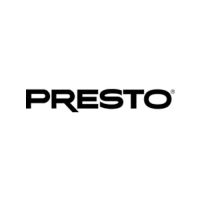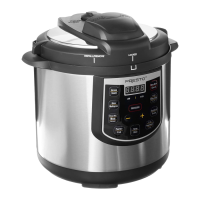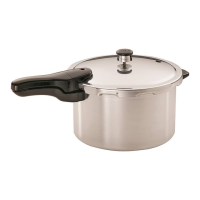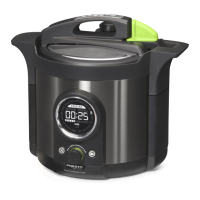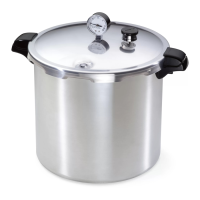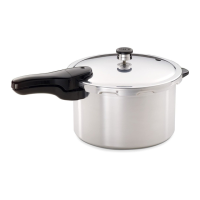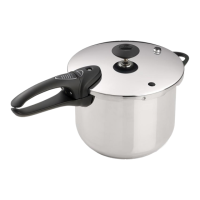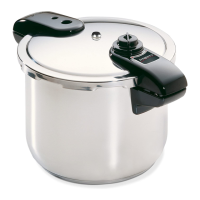2
This is a Listed appliance. The following important safeguards are recommended by most portable appliance manufacturers.
IMPORTANT SAFEGUARDS
To reduce the risk of personal injury or property damage, basic safety precautions should always be followed, including the following:
1. Read all instructions. Improper use may result in bodily injury or property damage.
2. Always check the vent pipe before use. Hold cover up to light and look through vent pipe to be certain it is clear.
3. Always check the air vent/cover lock to make sure it moves freely before use.
4. Do not ll pressure canner over ⅔ full when using for pressure cooking. For soup, grains, and dry beans and peas which expand
during cooking, do not ll canner over ½ full. Overlling may cause a risk of blocking the vent pipe and developing excess pressure.
See food preparation instructions.
5. Do not pressure cook applesauce, cranberries, rhubarb, cereals, pasta, split peas, dried soup mixes, or any dry beans and peas which
are not listed in the chart on page 30. These foods tend to foam, froth, and sputter and may block the vent pipe, overpressure plug,
and air vent/cover lock.
6. This appliance cooks under pressure. Improper use may result in scalding injury. Make certain pressure canner is properly closed
before operating; cover handles must be above the body handles. See “HOW TO PRESSURE CAN FOODS” instructions.
7. Do not place the pressure canner or attempt to pressure can or cook in a heated oven.
8. CAUTION! Do not use pressure canner on any outdoor LP gas burner or a gas range over 12,000 BTU’s. Doing so may result in
damage to the pressure canner and/or property damage and personal injury.
9. Extreme caution must be used when moving a pressure canner containing hot liquids. Do not touch hot surfaces. Use handles or knobs.
10. Do not open canner until internal pressure has been completely reduced, air vent/cover lock has dropped, and no steam escapes when
the pressure regulator is removed. See “HOW TO PRESSURE CAN FOODS” instructions.
11. To ensure safe operation and satisfactory performance, replace the overpressure plug every time you replace the sealing ring or sooner
if it becomes hard, deformed, cracked, worn, or pitted. It is recommended that the sealing ring and overpressure plug be replaced
at
least every three years. Use only genuine Presto
®
replacement parts.
12. Close supervision is necessary when the pressure canner is used near children. It is recommended that children not use the pressure
canner.
13. When operating pressure is reached, gradually lower the heat to maintain the pressure. If the pressure regulator is allowed to rock
vigorously, excess steam will escape, liquid will be evaporated, the canner may go dry, and food may scorch.
14. Do not use this pressure canner for other than intended use.
15. Do not use this pressure canner for pressure frying with oil.
SAVE THESE INSTRUCTIONS
THIS APPLIANCE IS FOR HOUSEHOLD USE ONLY.
GETTING ACQUAINTED
Your canner is a special, large capacity pressure vessel designed for home
canning a wide variety of fruits, vegetables, meats, poultry, sh, and seafood.
The canner may also be used to fast cook many of your favorite foods in
larger quantities than can be prepared in a conventional size pressure cooker.
The canner uses pressure to achieve the high temperatures required for safely
processing foods while canning. The United States Department of Agriculture
(USDA) recommends the pressure canner as the only safe method for canning
low-acid foods—vegetables, meats, poultry, sh, and seafood.
The canner will also cook many foods in one-third to one-tenth the time
required by conventional methods. Pressure cooking preserves avor and
nutrients and tenderizes tougher cuts of meat. Information for pressure cooking
begins on page 23.
Become familiar with the various parts shown on pages 3. Do not attempt to
use your pressure canner before reading the instructions on pages 6 and 7.
➒
Model Number
and Series Code
➋ ➌
➍
➎ ➏
➐ ➑➊
